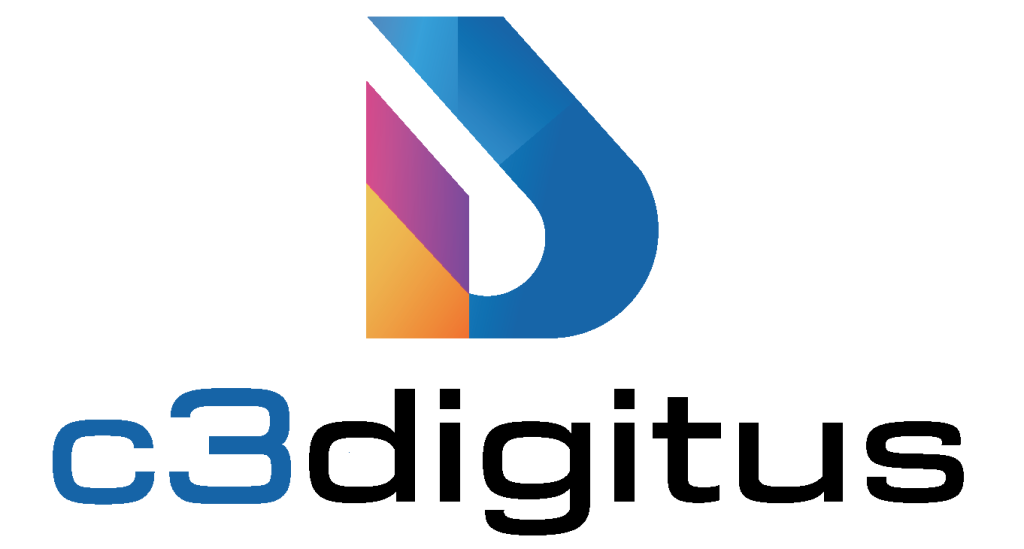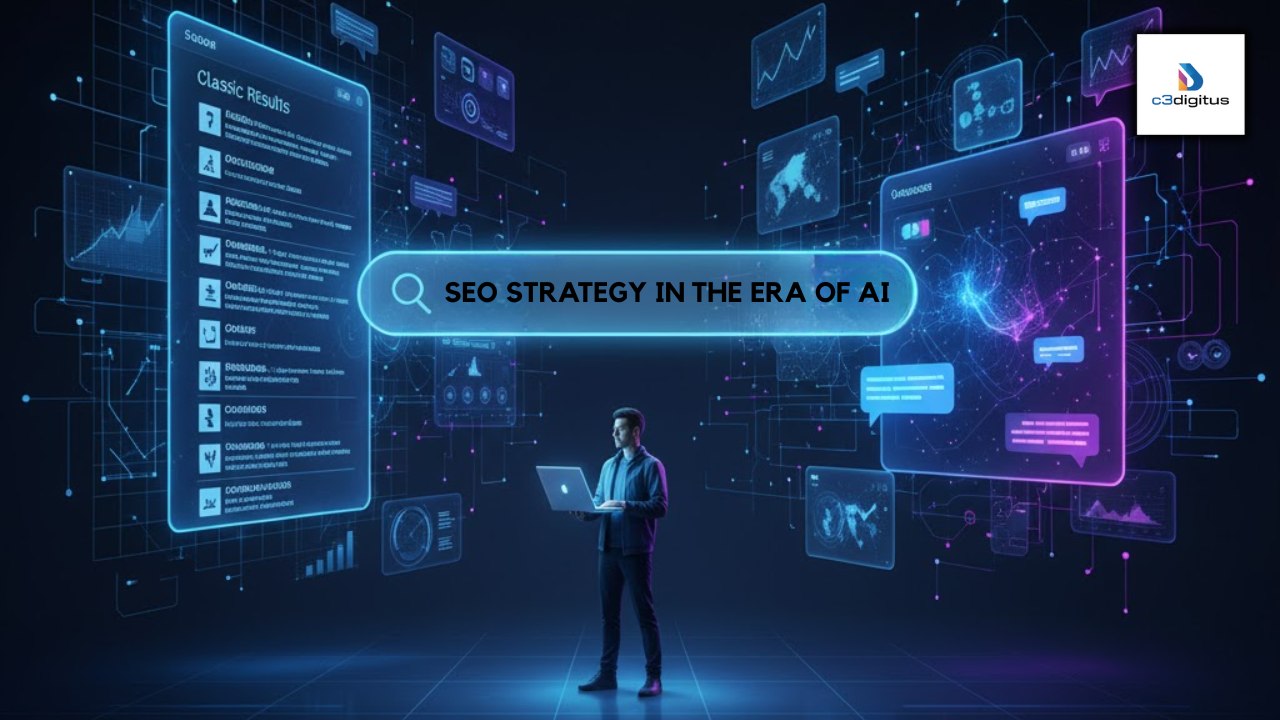The search landscape in 2025 looks very different from what it did just a few years ago. Generative AI has evolved from a novel experiment into a fundamental part of how people search, learn, and make purchase decisions. Whether it’s Google’s AI Overviews or conversational tools like ChatGPT, the way users find information has changed dramatically, but that doesn’t mean traditional SEO is obsolete. Instead, AI has layered itself over established search behaviors, forming what many experts call the new hybrid search era.
In this environment, success belongs to brands and marketers who understand not just how to rank, but how to be referenced, how to shape information so that both humans and machines can find, understand, and trust it.
AI Summaries Are Redefining Click Behavior
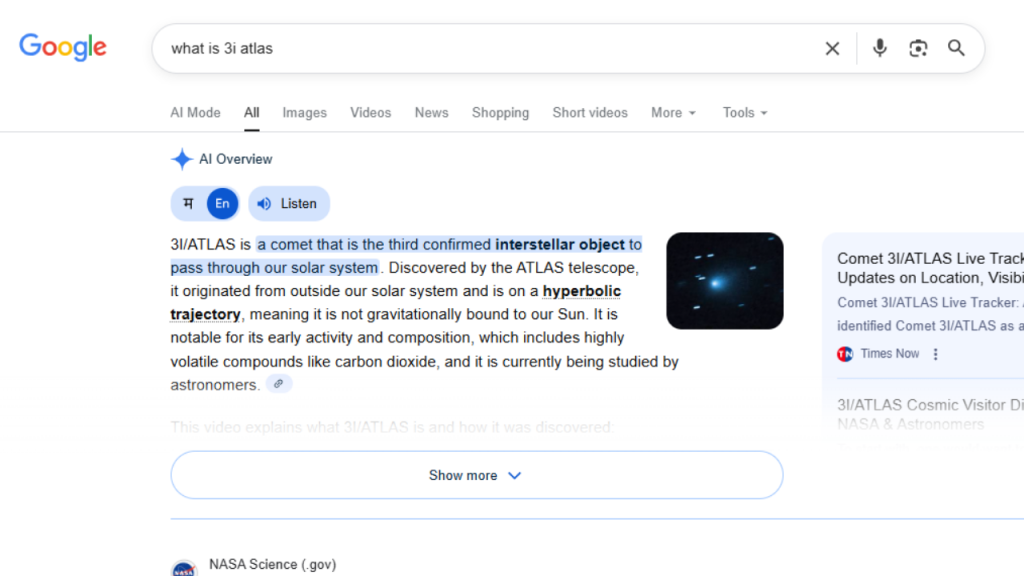
The introduction of AI-generated summaries, such as Google’s AI Overviews, has created a more frictionless experience for users. People no longer have to open five tabs just to answer a single query. According to research by Nielsen Norman Group, users increasingly rely on these summaries for quick understanding, while still depending on traditional search for validation and exploration.
This shift has led to two simultaneous trends:
- Fewer clicks per search: AI summaries deliver answers upfront, reducing the need to visit multiple pages.
- Earlier influence opportunities: Brands that resonate within these summaries can affect decisions sooner in the user journey.
In this new paradigm, visibility isn’t limited to ranking position, it’s also about presence in these machine-curated insights. If your site is structured properly, AI systems can identify and surface your content exactly when users are forming opinions or choosing products. Think of it this way: the summary is the new front door of search visibility.
Traditional Search Is Still Thriving
Despite predictions about the death of SEO, the data paints a different story. According to Semrush, overall Google traffic remains stable, even as AI adoption accelerates. Similarly, SparkToro’s 2025 research shows that 95% of Americans still use traditional search engines monthly, compared with only around 20% who use AI tools more than 10 times a month.
These insights reveal that users are blending tools, not abandoning one for another. The pattern looks like this:
- Discovery starts in AI chat tools. People ask questions or request explanations.
- Verification happens on Google. They confirm, compare, and explore results in the top rankings.
- Conversion happens on websites. Ultimately, products, services, and sign-ups still rely on site-based trust.
This workflow reinforces the continued importance of organic visibility. Far from being irrelevant, traditional SEO now serves as the critical source layer that feeds both human searches and AI summaries.
Optimizing for AI Summaries
Ranking in 2025 is not only about being listed, it’s about being referenced, extracted, and summarized. To thrive in an ecosystem that blends AI and search together, consider these key optimization strategies:
- Clear and concise information. AI algorithms look for snippable, context-rich definitions or explanations. Each paragraph should independently deliver value in fewer words.
- Structured data and schema markup. Schema helps both search engines and large language models interpret context. Whether it’s FAQ schema, HowTo markup, or Product data, structure allows machines to surface your content more accurately.
- EEAT signals matter more than ever. Experience, Expertise, Authority, and Trustworthiness are critical ranking and summarization factors. Incorporate author bios, expert sourcing, and first-hand insights to demonstrate reliability.
- Balance between depth and structure. Long-form content remains powerful for authority building, but break sections into clear headers and concise takeaways so AI systems can extract segments cleanly without misrepresenting meaning.
- Leverage internal linking for topical unity. Interlink related topics so your website becomes a coherent topical network. This improves machine comprehension and strengthens contextual relevance across pages.
For instance, a health brand could structure an article on managing stress naturally into short sections, definition, methods, expert advice, and FAQ, making it easier for AI tools to summarize specific insights while still crediting the original source.
If you don’t have time to read the full section, here’s a quick cheat sheet for optimizing your content for AI summaries:
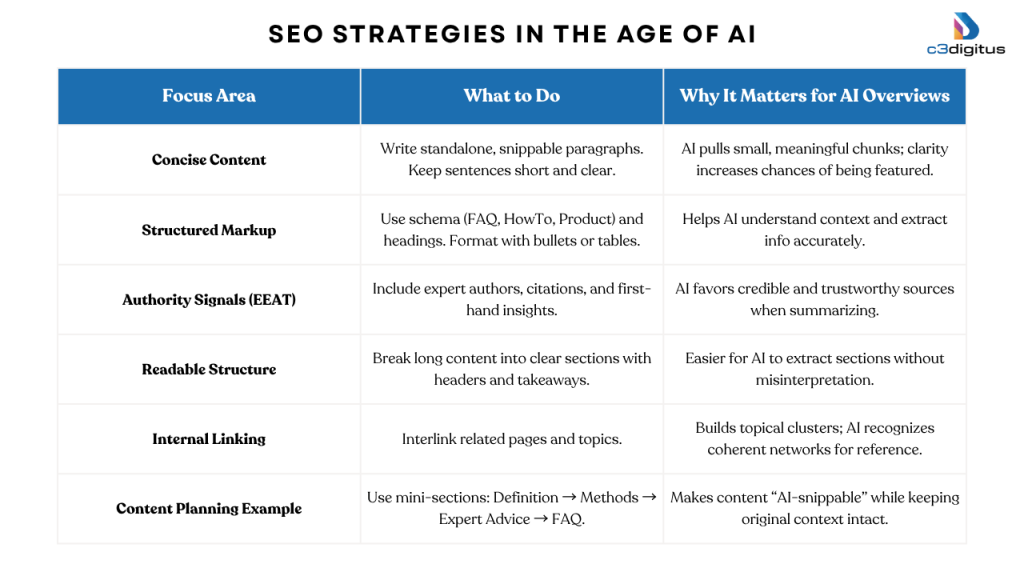
The Role of Chat Tools in the Discovery Funnel
Beyond Google, chat-based tools such as ChatGPT, Claude, Perplexity, and Gemini are shaping the new discovery funnel. Users often begin with these AI assistants to ask broad or exploratory questions, what’s the best electric SUV for 2025?, and then move to Google for second opinions or brand comparisons.
This dual behavior means your content must adapt to both environments:
- Conversational tone for AI tools: Content should mirror the clarity and structure of natural conversation. Paragraphs answering what, why, and how questions directly perform better in generative AI answers.
- Factually sound for traditional search: Prioritize verifiable claims, references, and cited data to maintain credibility across engines.
Brands positioned for both conversational engagement and factual precision enjoy greater share of voice across the hybrid search ecosystem.
Meeting Users Where They Search
In the AI-driven landscape, visibility happens in layers. Google captures long-tail queries with click-based exploration, while AI models handle conceptual, intent-driven discovery. The smartest SEO strategies bridge the gap between these layers by aligning content with how people think, not just how they search.
Consider three practical steps:
- Reverse-engineer AI queries: Use AI chat tools to simulate how users explore your niche. Identify the patterns in follow-up questions and use them to refine your FAQ and topic clusters.
- Optimize for inclusion, not just ranking: Structure information so AI models can cite your site within an answer, even if users don’t click immediately. Over time, citation presence drives authority and brand recall.
Create dual-purpose assets: Develop content that serves both a human reader and an AI summarizer. A 2,000-word guide, for instance, should include short, definition-rich passages that a model can lift succinctly.
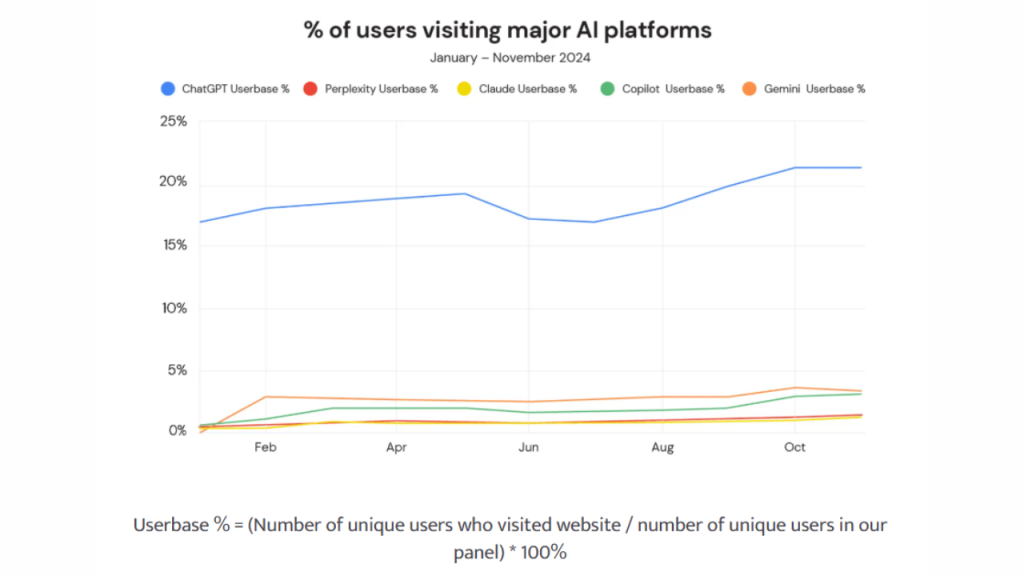
Measuring Performance in a Hybrid Era
As AI summaries rise, relying solely on traffic metrics can paint an incomplete picture. Instead of measuring visibility strictly by clicks, broaden your analytics to account for impressions within AI summaries and engagement signals across platforms.
Advanced marketers are already tracking:
- Brand mentions within generative results.
- Citation frequency from AI tools.
- User interactions between chat platforms and organic search listings.
- Declared trust signals (reviews, verified authorship, backlinks).
Future SEO reports may include both search reach and AI reach. In other words, how often does your content inform AI-generated answers, even when users don’t directly visit your page?
The Future of SEO Is Hybrid
In 2025, SEO is no longer a one-dimensional race for keyword rankings. It’s a networked process across search engines, AI summaries, and conversational platforms, a discipline better described as Search Ecosystem Optimization.
A hybrid SEO strategy blends the strengths of both worlds:
- The authority and depth of traditional SEO.
- The contextual discoverability of AI platforms.
- The speed and interactivity of conversational interfaces.
To win in this environment, businesses must diversify their visibility efforts, investing in structured content, conversational tone, factual precision, and technical optimization that supports machine reading.
By doing so, brands can own their message across multiple channels, whether it’s quoted by an AI assistant or displayed in the first ten results on Google.
FAQs
Are AI summaries reducing website traffic?
In some cases, yes, especially for simple, fact-based queries. However, they also elevate brand authority by featuring credible sources within the summaries. The goal is not to eliminate traffic loss but to influence earlier in the decision cycle.
Should businesses still invest in SEO when AI tools dominate?
Absolutely. Core search volume remains consistent, and SEO strengthens brand visibility even within AI-generated content ecosystems.
How can websites get featured in AI summaries?
Offer structured, authoritative, and concise content. Use schema markup effectively, deliver clear definitions early, and maintain high EEAT standards to earn algorithmic trust.
Do consumers prefer AI tools over Google search?
Not yet. Around 20% of Americans use AI tools heavily, but over 95% still rely on search engines monthly. Users view AI more as a complement than a replacement.
What does a hybrid SEO strategy mean?
It means optimizing content to perform well across both search engines and AI-driven interfaces. That involves crafting content that’s authoritative, factual, and structured, so AI systems and human readers alike can benefit from it.
The future of SEO doesn’t belong to one platform or technology. It belongs to those who can adapt, who can write for both algorithms and audiences, for human understanding and machine interpretation. In a world where summaries can serve as the new homepage and a chat window can act as a search result, the smartest strategy is one that fuses the old and the new into a single, cohesive approach.
